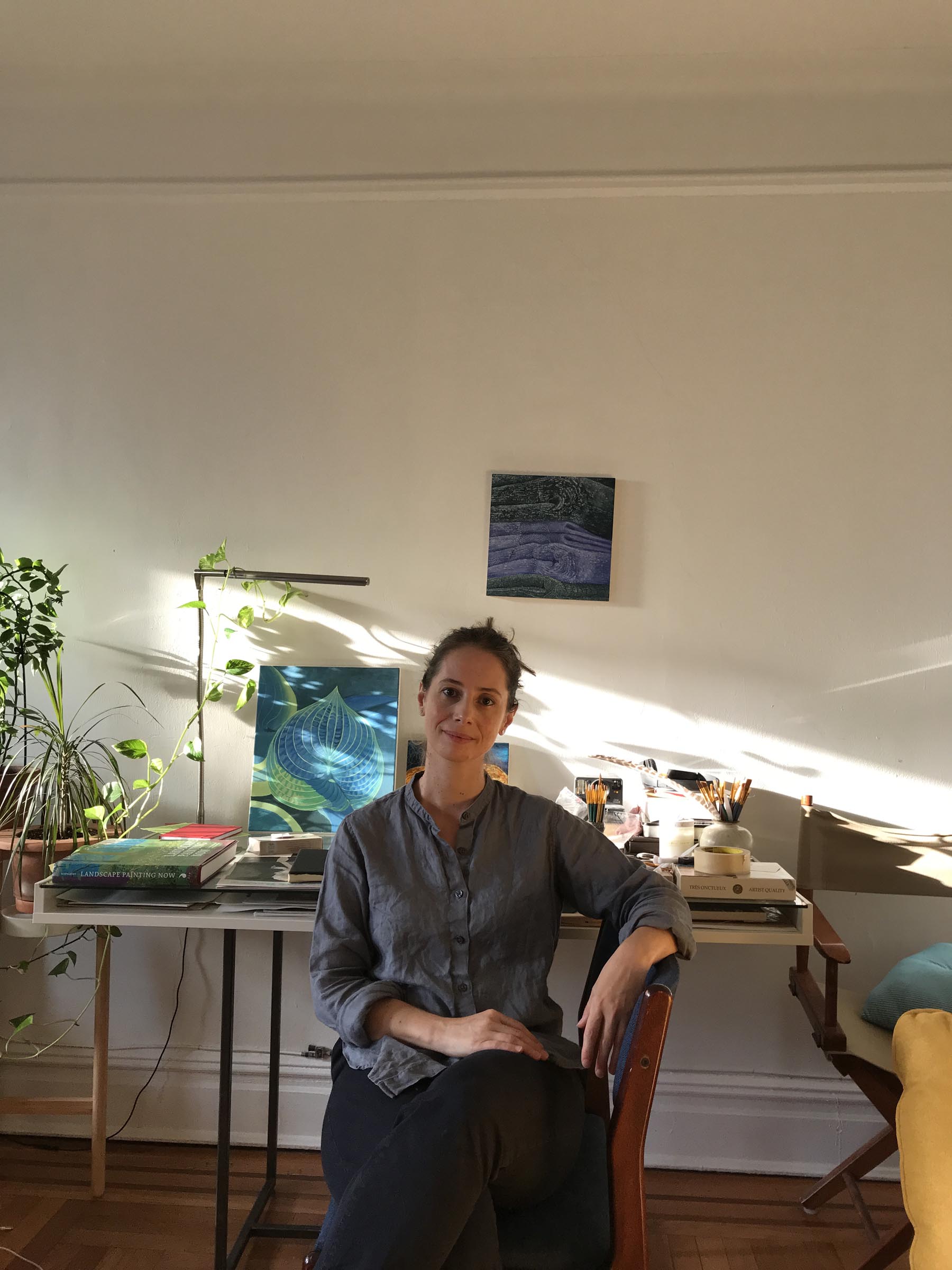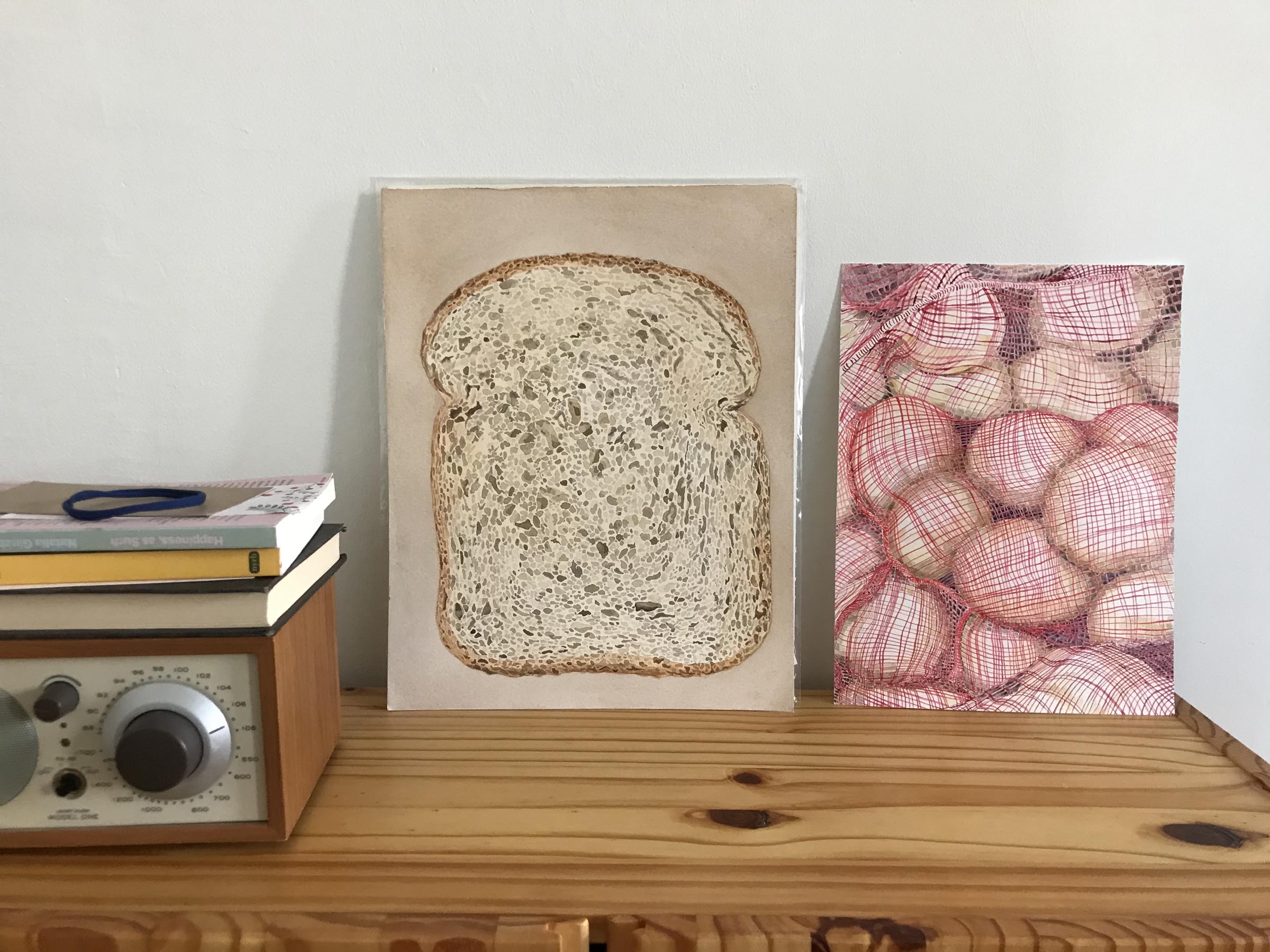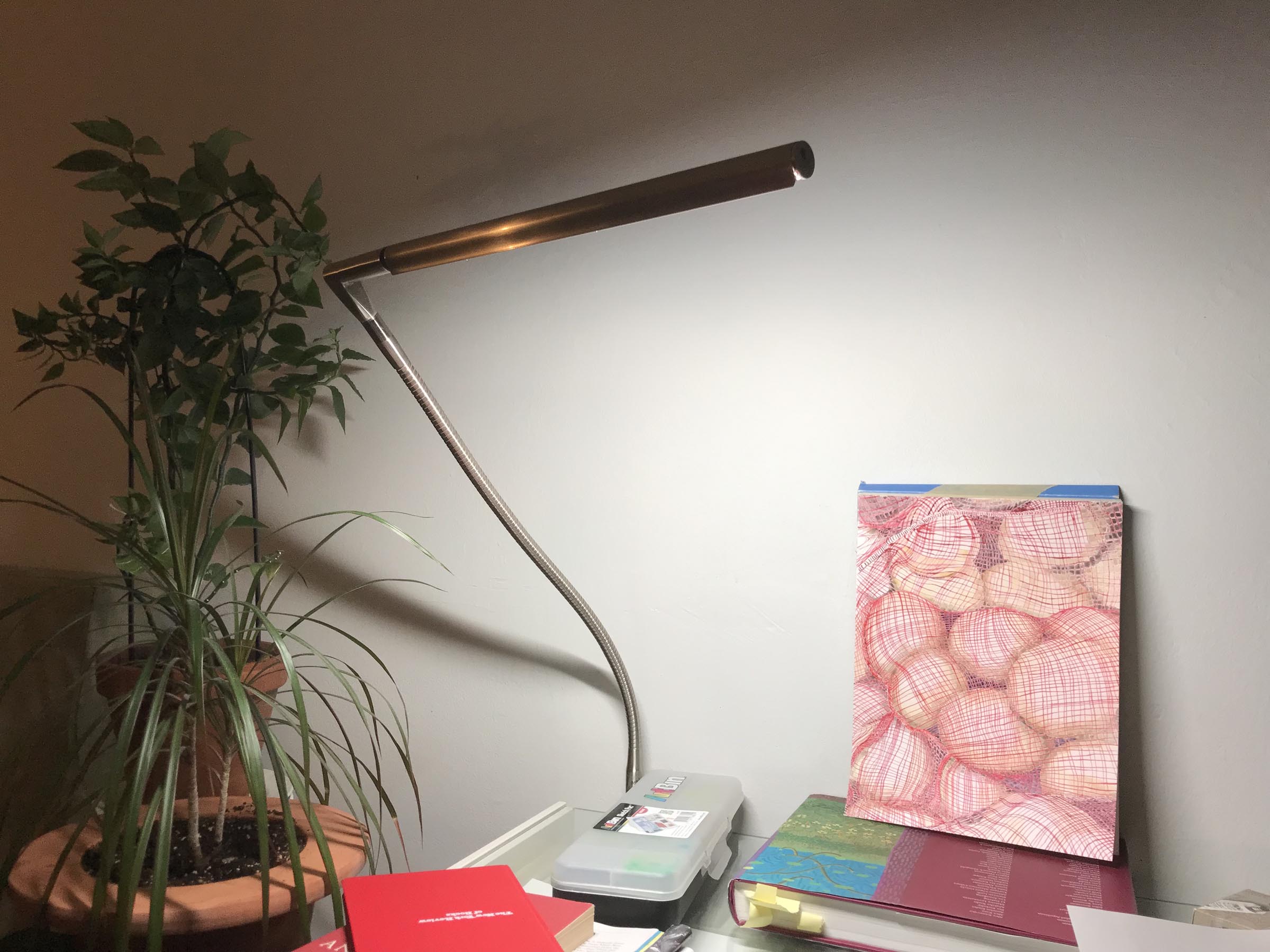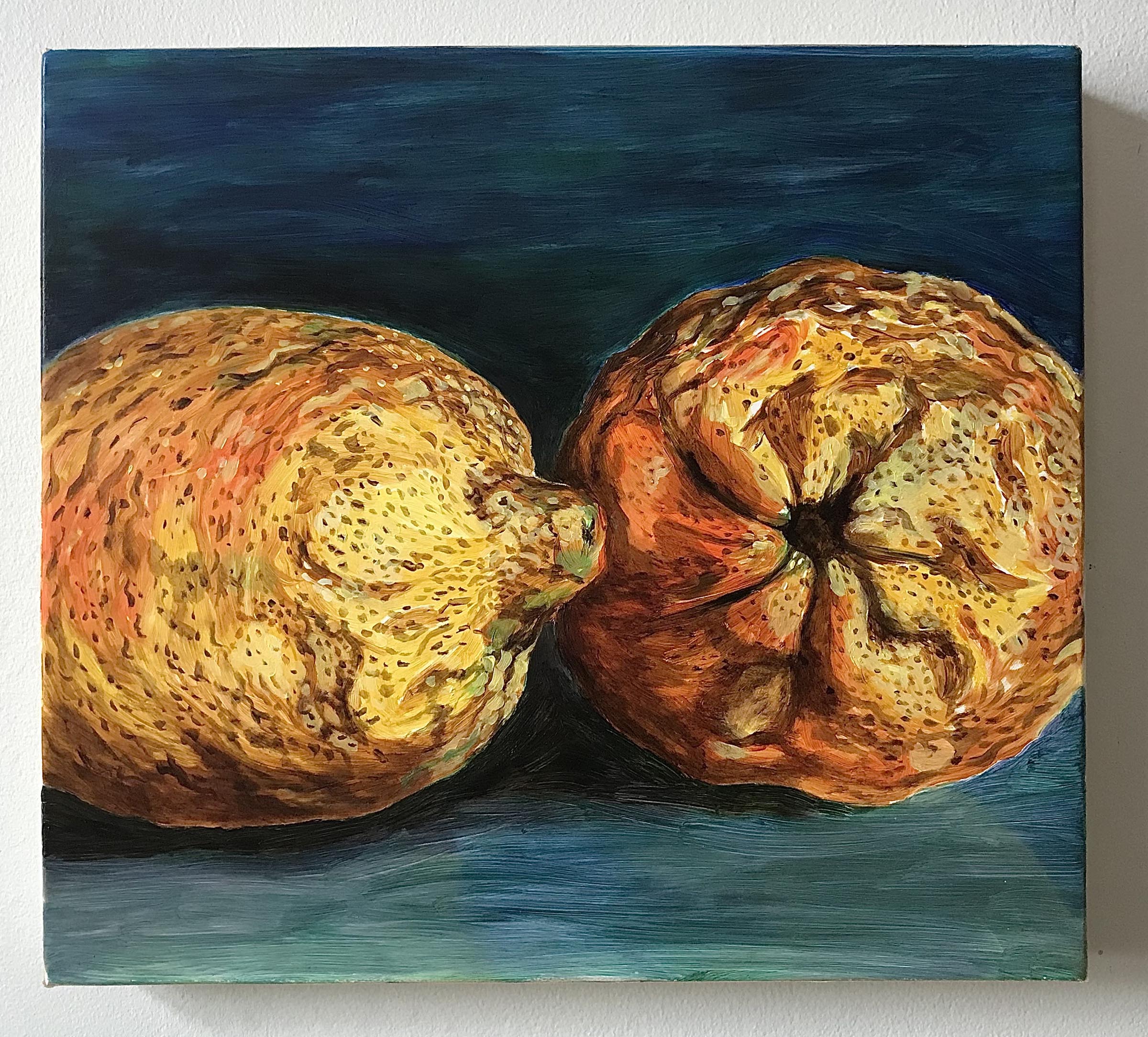How did you get into making art?
I drew a lot as a child. Mostly, I looked at things. I remember the milestones of figuring out how to draw believable profiles or when the second volume of my mother’s History of Art textbook finally started to make sense to me, after having seemed so wild for most of my childhood.
When it came time to go to university, art school was the hardest to get into. I was evaluated to be not gifted enough to sit for the admission exam so I went instead to architecture school.
I really only became an artist about five years ago when I simply made a commitment to experiment and learn and make work on a consistent basis.
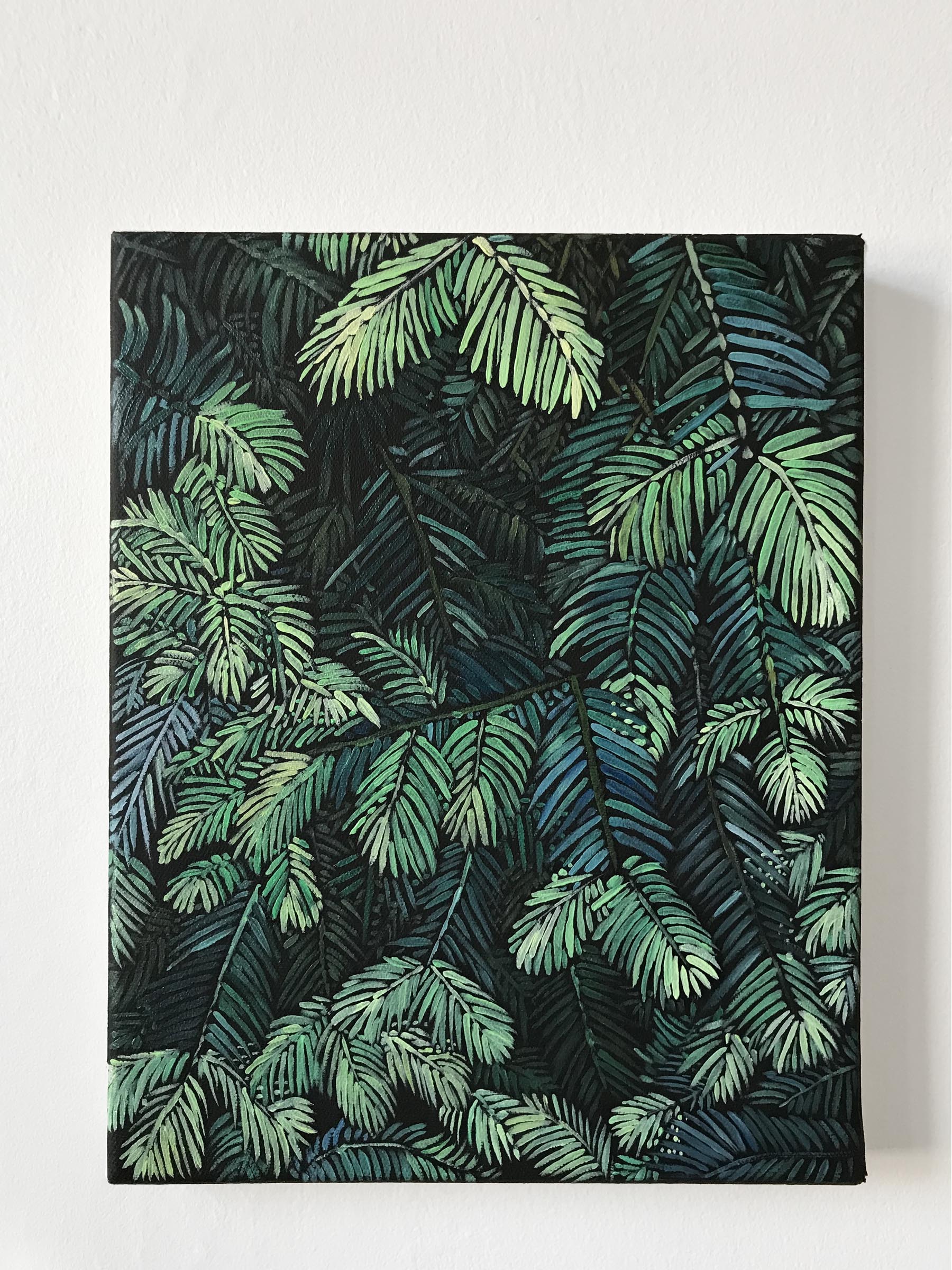
What are you currently working on?
I recently started working on a series of paintings on black backgrounds. I like to build layers from dark to light, but lately I’m more interested in distilling this process into something similar to mark making in which the image gets resolved through a series of graphic elements rather than surfaces. I am not sure why I’m attracted to this process; I’ve experimented with printmaking before and I really like the reductive, constrained nature of it.
Most of my works are currently observational in nature.
Clara Ranenfir
What inspired you to get started on this body of work?
I was inspired to experiment with this method because I’ve become more comfortable with the idea of painting as decoration and, dare I say, illustration.
Most of my works are currently observational in nature – I’m very interested in the fact that representation always relies on a certain degree of artificiality of means that I like to make visible though idiosyncratic, experimental mark making. In this way, I also can’t stop thinking about how closely the act of learning to making art in this age hyper saturated with imagery resembles being a very slow and inefficient AI system.

Do you work on distinct projects or do you take a broader approach to your practice?
I don’t think I can say I work on projects, but that may be possible in the future. I can discern distinct patterns in retrospect – recently, I realized I’ve been taking a lot of photographs at night and I think this may become a larger series. I also paint a lot of food items, which are usually presented in a context in which their “processed” quality is revealed.
What’s a typical day like in your studio?
I like to set aside one or two uninterrupted days a week just in the studio, with no other obligations. But sometimes I only have a few hours available and I have to make very fast decisions which don’t leave a lot of room for second guessing – I could say the only option left is a kind of methodical, unfunny playfulness. After those initial decisions are made the work itself becomes eerily soothing and the only thing I have to be vigilant about is the tendency of the hand to repeat itself. My hand likes to be a photoshop clone stamp.
Who are your favorite artists?
I love Vija Celmins, Victor Man, Matthew Wong, Milton Avery, Domenico Gnolli, Nicole Eisenman, Francis Alys and so many of the younger artists – Jenny Lee, Eleanor Ray, Ellen Siebers, Claudia Keep.
I have looked a lot over the years at David Hockney’s work – I love how his work doubles as a kind of visual scientific method.
Where do you go to discover new artists?
Other artists! It may be the best unintended quality of instagram, the way in which you can see glimpses of their work and inspiration. But there is no substitute for seeing things in person, and being introduced to new art by friends with completely different interests – I’m so grateful to be in New York for that reason. I also am making an effort to spend more time with artwork that makes me uncomfortable and try to understand why that is.
Learn more about the artist by visiting the following links:
